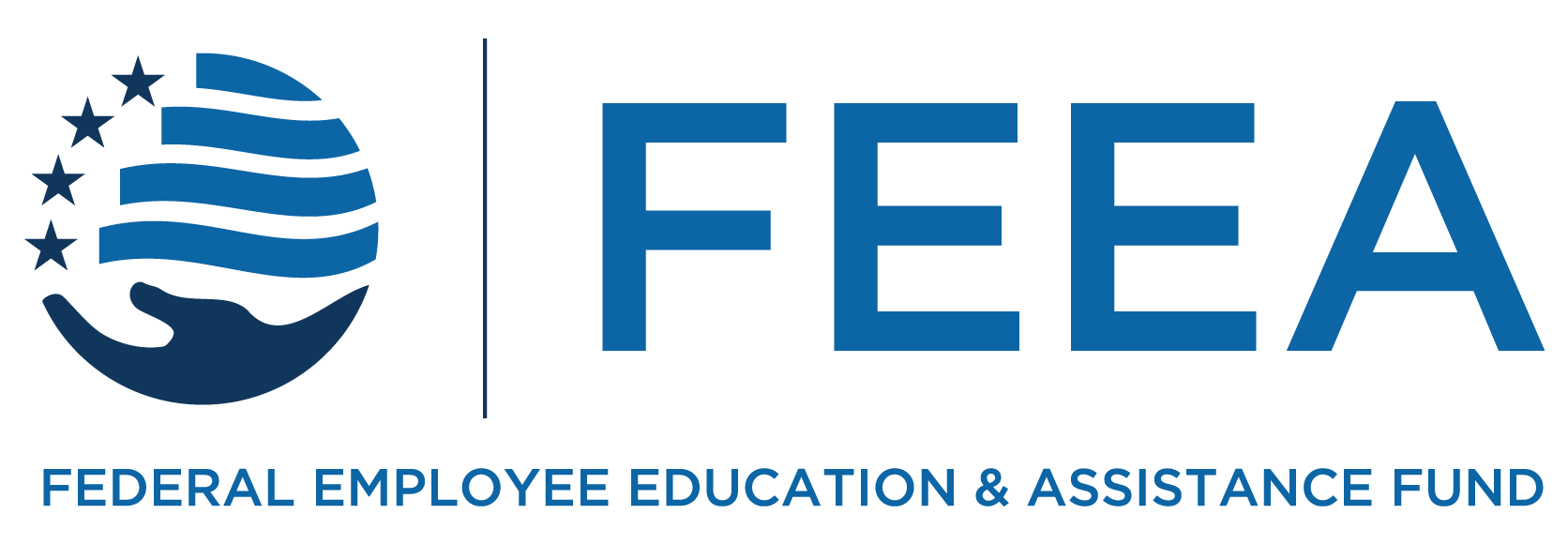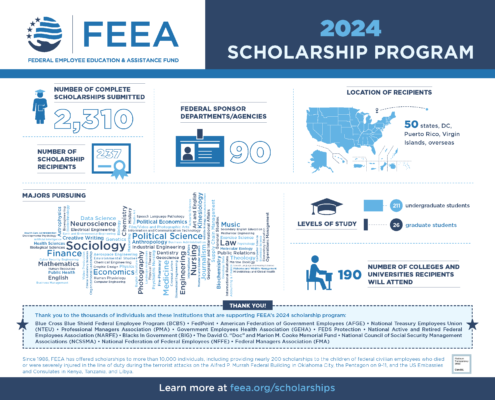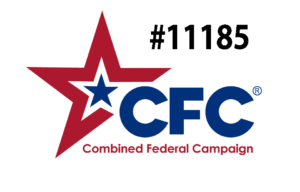by Joyce Warner
I recently sat down with Annie Scalora from WAEPA’s Ernst & Young Financial Wellness Program Partnership to talk about how federal employees can best balance saving for retirement and college.
Joyce: Annie, thank you so much for speaking with me today. We interviewed EY last year about the ins and outs of 529 college savings plans and also wrote a detailed piece about understanding college financial aid letters. Can you briefly remind our readers about the retirement savings vehicles available to federal employees?
Annie: Federal employees have the ability to contribute towards their Thrift Savings Plan (TSP). Here, they elect to make pre-tax and/or Roth contributions directly from their paycheck, and those contributions are invested according to their fund selections. If they contribute at least 5% of their salary, they are also eligible to receive the full matching contributions from their agency or service, which is extra savings for their future!
Federal civilian employees hired on or after January 1, 1987 also have retirement coverage under the Federal Employees Retirement System (FERS), where they receive a monthly annuity payment in retirement and have access to Social Security.
Those hired prior to 1987 may have retirement coverage under the Civil Service Retirement System (CSRS) which is also a monthly annuity payment, however, it is calculated differently than FERS. CSRS employees generally do not have Social Security benefits from their Federal service.
Joyce: We often hear that federal employees are trying to balance saving for their retirement, while also saving for their children’s college education. Does EY have a recommended rule of thumb for how to allocate savings between these competing priorities?
Annie: This is a common conversation I have with parents. Parents may be juggling many financial goals, from college savings and retirement to paying down credit card debt and saving for a home. If we are deciding between retirement and college savings, frankly, it is recommended for parents to hold retirement savings as the higher priority.
As a parent, I would love to cover my children’s college costs. However, when I ran the numbers, I realized I had to take away from other financial priorities: I had to adjust certain retirement goals in order to cover the full cost, such as having to work longer and reduce my yearly retirement budget.
It’s important to mention that there is no assistance if you run out of retirement savings. Most employees need those additional savings to supplement their FERS/CSRS annuity and Social Security to live a comfortable retirement.
If a parent decides to reduce their retirement savings in order to save for college, they should at minimum save 5% to their TSP in order to get their full match – don’t leave free money on the table! Meanwhile, there are multiple ways to help pay for college costs, including scholarships, grants, work-study programs, and ultimately, student loans to cover any remaining costs.
If parents are not able to cover 100% of their child’s college costs, consider saving for a specific portion of the expenses, such as half of the tuition or covering their room and board. Either way, parents should always communicate with their child regarding what they plan to pay for and what portion will be the responsibility of the child.
Joyce: Would you adjust your advice based on factors like the age of parents/time until retirement or the number or ages of children/time until college?
Annie: Saving early is key for both goals — the longer you have to contribute, the better. A longer time horizon also gives you more opportunity for growth from investments. If a parent started saving for college when the child is in high school, they may want to avoid higher risk investments, like stocks or stock mutual funds, in the event the investments drop in value and there may not be enough time to recover losses.
With multiple children planning to go to college, parents may feel even more financial pressure, especially if the children are closer in age and have overlapping college years.
This stresses the importance of having a financial plan and not saving blindly. Remember, if parents are not able cover their children’s full college costs while allocating money to other goals, there is help out there through scholarships, grants and student loans.
Joyce: Are retirement savings considered to be available assets when completing the Free Application for Federal Student Aid (FAFSA) or College Scholarship Service (CSS) Profile? IE, how might saving for college or retirement affect potential financial aid?
Annie: When completing the FAFSA, retirement account balances are not included so they will not impact student aid and federal loan options. You do have to include any voluntary pre-tax contributions you made as untaxed income. For example, if a parent contributed $10,000 into their TSP in 2019, on the 2021-2022 FAFSA they would need to include that $10,000 contribution as part of their income.
Many colleges and universities only use the FAFSA for student aid. Some colleges may require the CSS Profile in addition to the FAFSA when awarding institutional aid.
The CSS Profile is a more detailed review of a family’s finances and has some differs from the FAFSA in multiple ways. One of those differences is the addition of parent and student-owned retirement assets, which may cause students to qualify for less aid.
Both the FAFSA and the CSS Profile include education savings, such as 529 plans, in their analysis of financial aid.
FEDLIFEHACKS Balancing Retirement and College Savings
[Video Start]
[Video presented with written slides in English]
[music]
[FEEA #FEDLIFEHACKS logo with a light bulb at the top encased by a blue box.]
[Two piggy banks, one is larger and the other is smaller and facing the larger bank to represent a parent and child]
How to Balance Saving for Retirement and College
[An image of three individuals. A man and woman are sitting next to each other, the woman with her hand on the man’s arm and looking over to the third individual, a man. The third individual, is reviewing paperwork in front of him]
What’s the higher priority?
- It is recommended for parents to hold retirement savings as the higher priority. Unlike for college costs, there is no assistance if you run out of retirement savings.
- If you decide to reduce TSP savings, don’t go below 5% so you’ll still get the full match!
[An image of five kids outside laying on the ground in a pyramid and smiling for the camera]
Does age/number of kids make a difference?
- Saving early is key for both goals – the longer you have to contribute, the better. The later you start, the less risk you will likely want for your investments.
[an image of a specialized keyboard with a green button where the shift key would be reading, “FAFSA: Free Application for Federal and Student Aid”]
Are retirement savings considered in financial aid calculations?
- The FAFSA does not, but you do have to include any voluntary pre-tax contributions you made as untaxed income.
- The CSS Profile includes retirement savings for both parent(s) and child in its calculations.
[An image of a route road sign has the word, “RETIREMENT Roth IRA”]
Can a child open a Roth IRA?
- Kids who have earnings from employment (like a summer job) can open a Roth IRA and later use the contributions for qualified higher ed expenses.
- If the Roth IRA owner doesn’t need to use the money for school, then they can keep it for retirement.
[An image of a pink piggy bank with a graduation cap sits atop a stack of books]
Are there taxes and penalties for using Roth IRAs for college?
- Contributions can be used for qualified higher ed expenses, tax and penalty free. Earnings that are used will be taxed, but there’s no penalty.
- Withdrawals from retirement accounts will count as income for that year on the FAFSA
For more information on this topic, visit fees.org/collegeretirment
[WAEPA logo.]
FEEA thanks WAEPA for contributing to our #FedLifeHacks program
[FEEA #FEDLIFEHACKS logo with a light bulb at the top encased by a blue box.]
[music]
[Video End]
Joyce: I know that children with earnings from employment (like a summer job) are eligible to open and contribute to a ROTH IRA. How might that be a vehicle for their own college savings as well as their future retirement?
Annie: A Roth IRA is an alternative option for children and parents when saving for college. As you pointed out, the child must have earned income from a job and cannot contribute more than what they earned, even if it is below the $6,000 contribution limit for 2021.
With a Roth IRA, the account owner can take their contributions out first without taxes or penalties. Earnings on investments will be taxed, but will avoid the 10% early withdrawal penalty if used for qualified higher education expenses.
Balances in retirement accounts are not applied to the FAFSA, however, withdrawals from retirement accounts will count as income for that year on the FAFSA. If the Roth IRA owner doesn’t need to use the Roth IRA money for school, then they can keep it for retirement.
Joyce: Any other advice for families trying to balance their savings priorities?
Annie: Families will have other competing financial goals in addition to college and retirement: paying down debt, building an emergency fund, saving for a down payment on a new home or car, to name a few. Balancing short- and long-term financial goals may seem overwhelming so start by setting priorities. Then, understand what you have to work with by analyzing your cash flow: how much money is coming in and where is it going?
You can track your spending and saving by using a spreadsheet, an online program or website, or simply writing down your expenses in a notebook. Here, you can make educated decisions on how much you can afford to save for each goal and find ways to reduce spending.
You should reassess your saving strategy periodically and make adjustments when you experience changes in your life, such as birth of a new child, getting married, receiving a raise/promotion, moving to a new home, etc.
RELATED STORIES FROM FEEA
Subscribe to FEEA’s Newsletter
FEEA thanks WAEPA for contributing to our #FedLifeHacks program
Would you like to reprint this piece in your agency human resource, federal employee association, or union local newsletter? You can do so at no cost by contacting [email protected] with your request.
The information provided in this piece is for your convenience and informational purposes only and not to be construed as professional advice. FEEA and its coauthors and sponsors are not liable for any losses or damages related to actions or failure to act with regard to the content in this piece.














